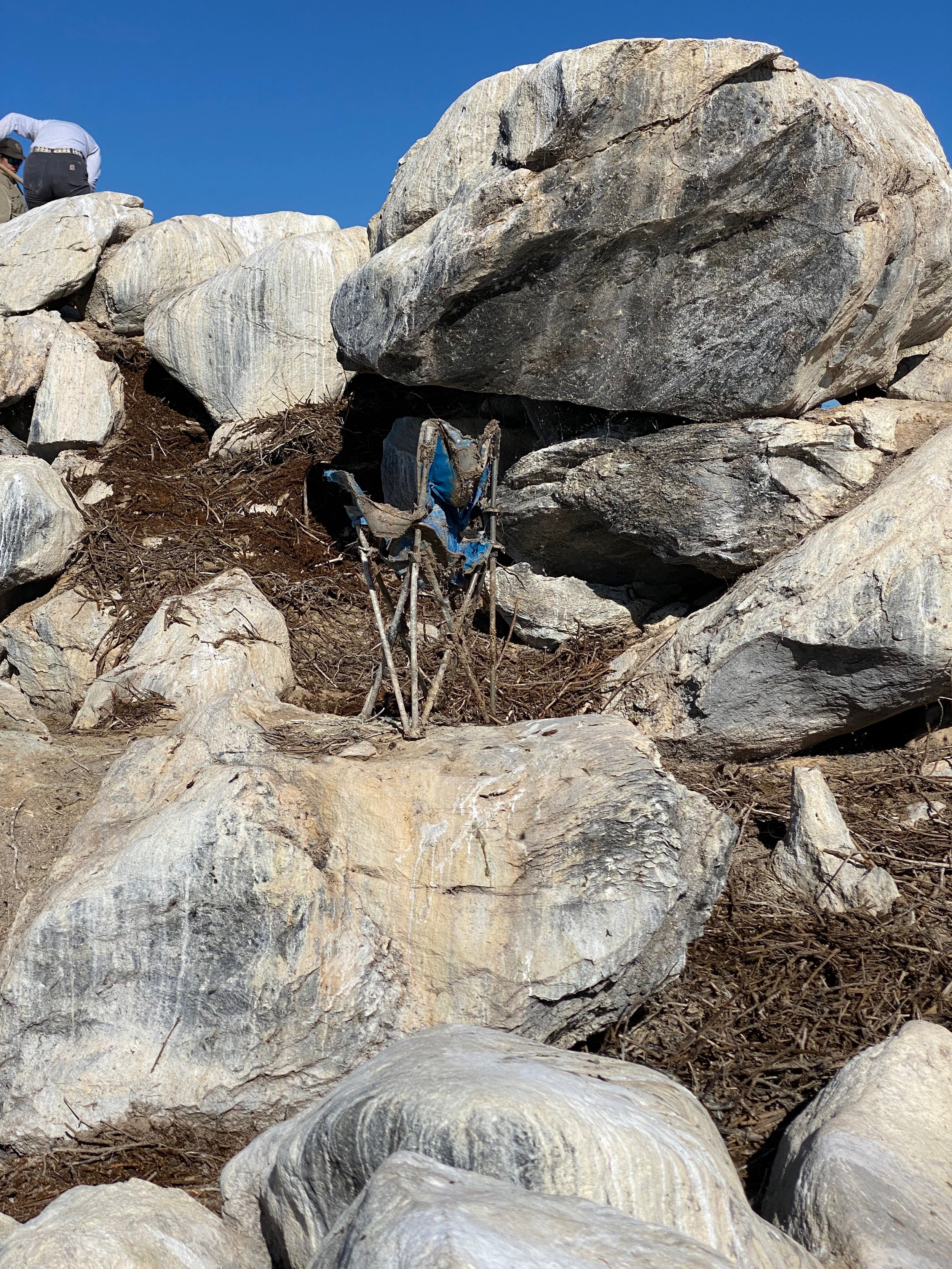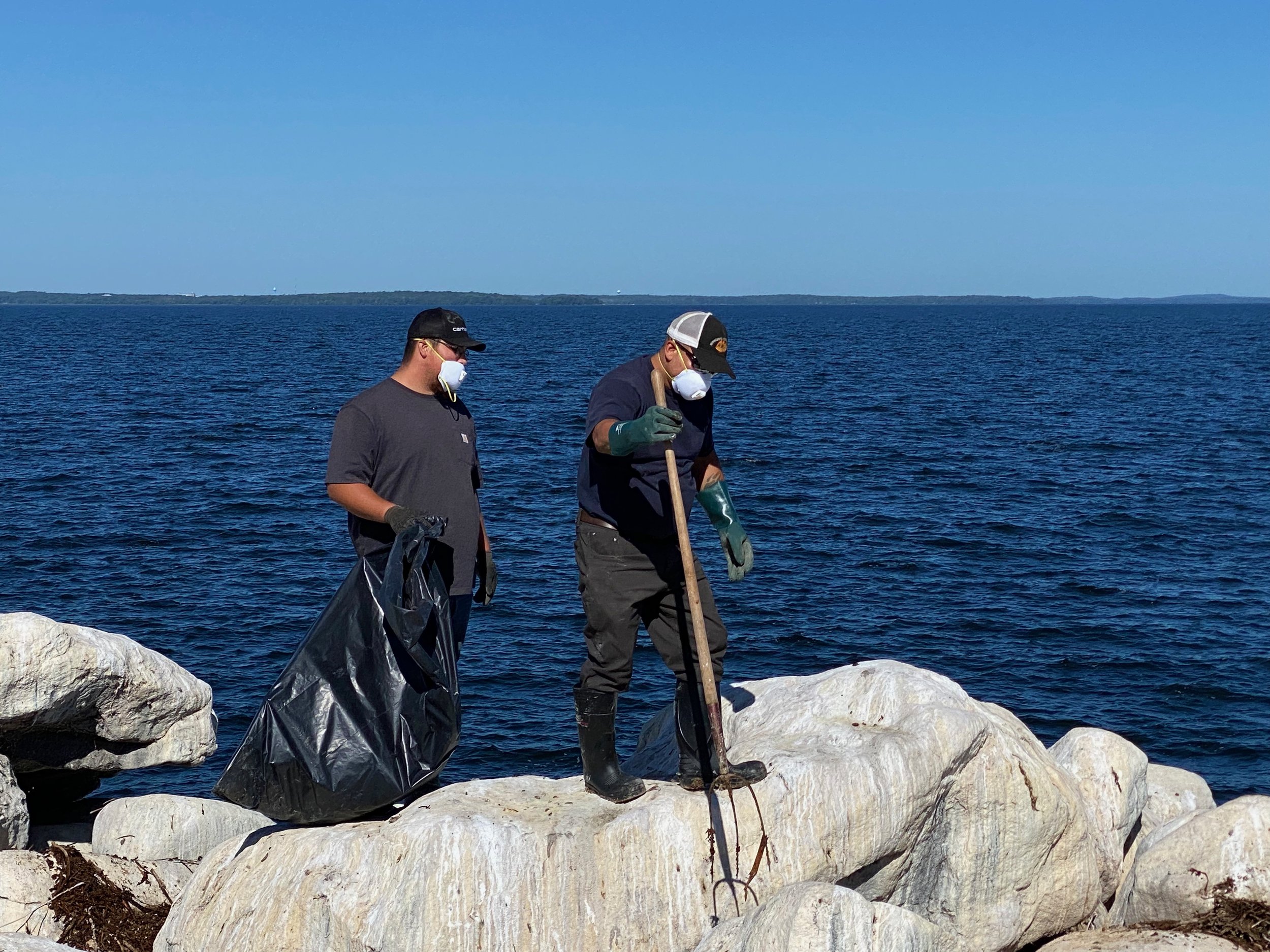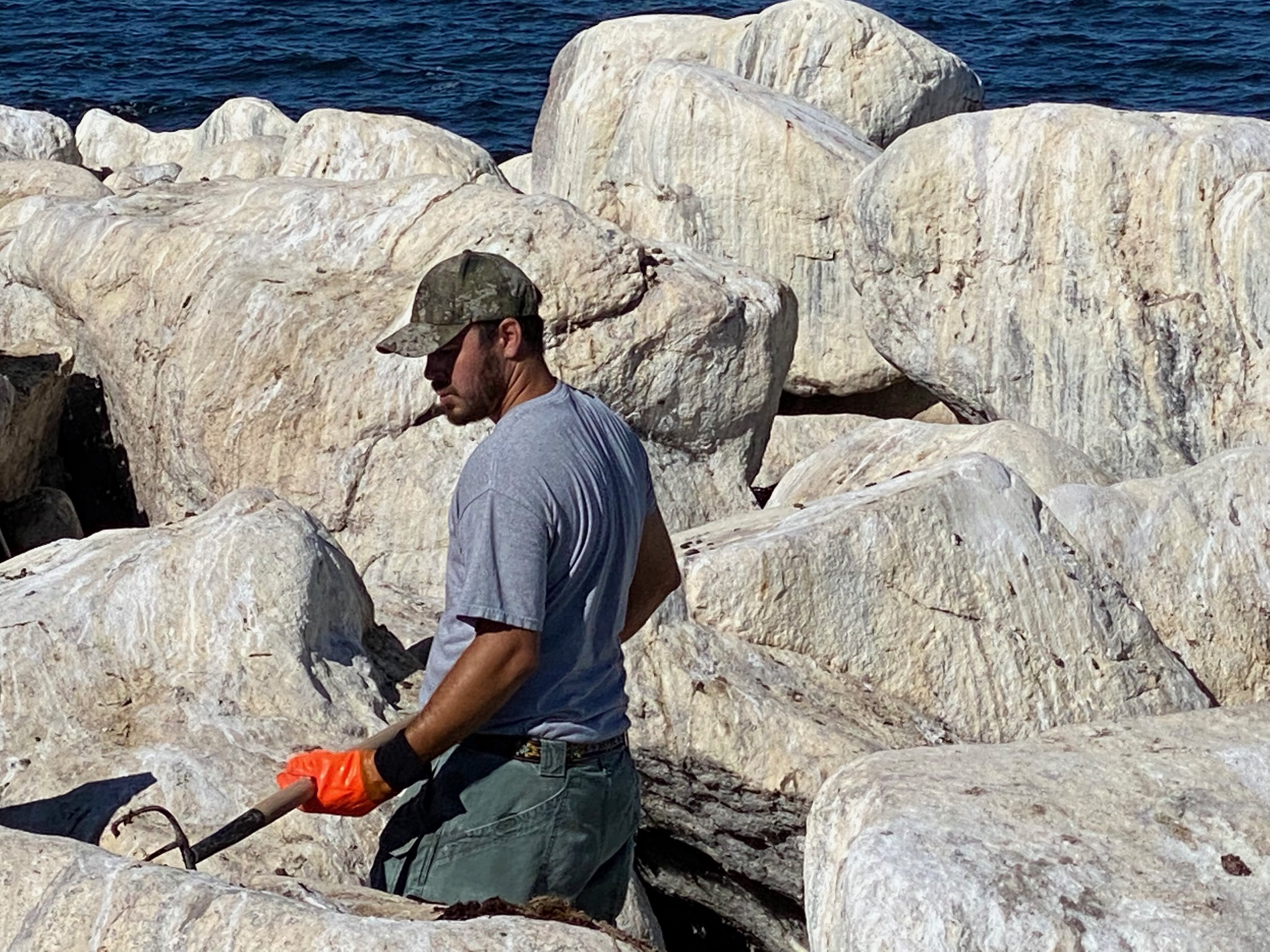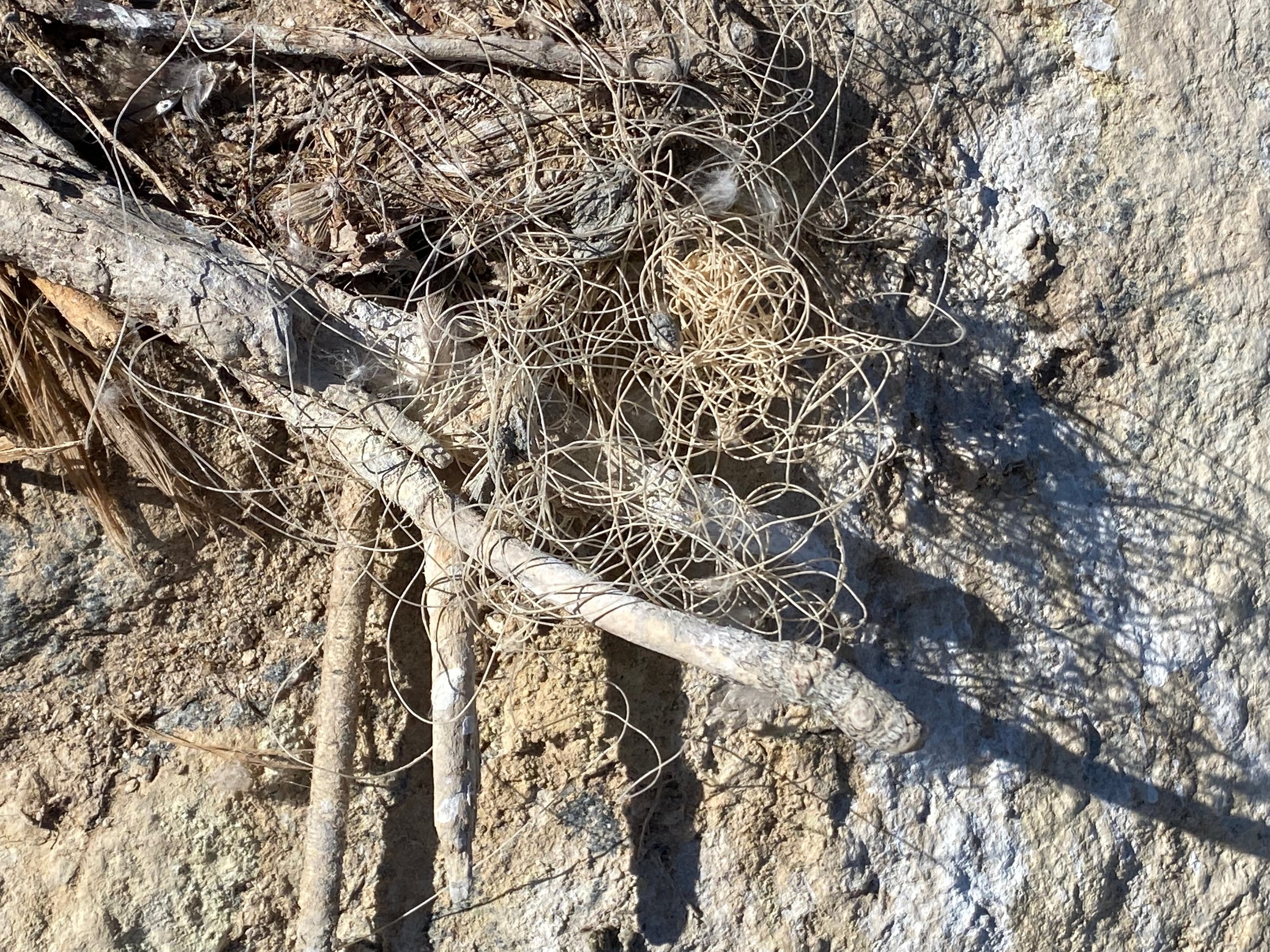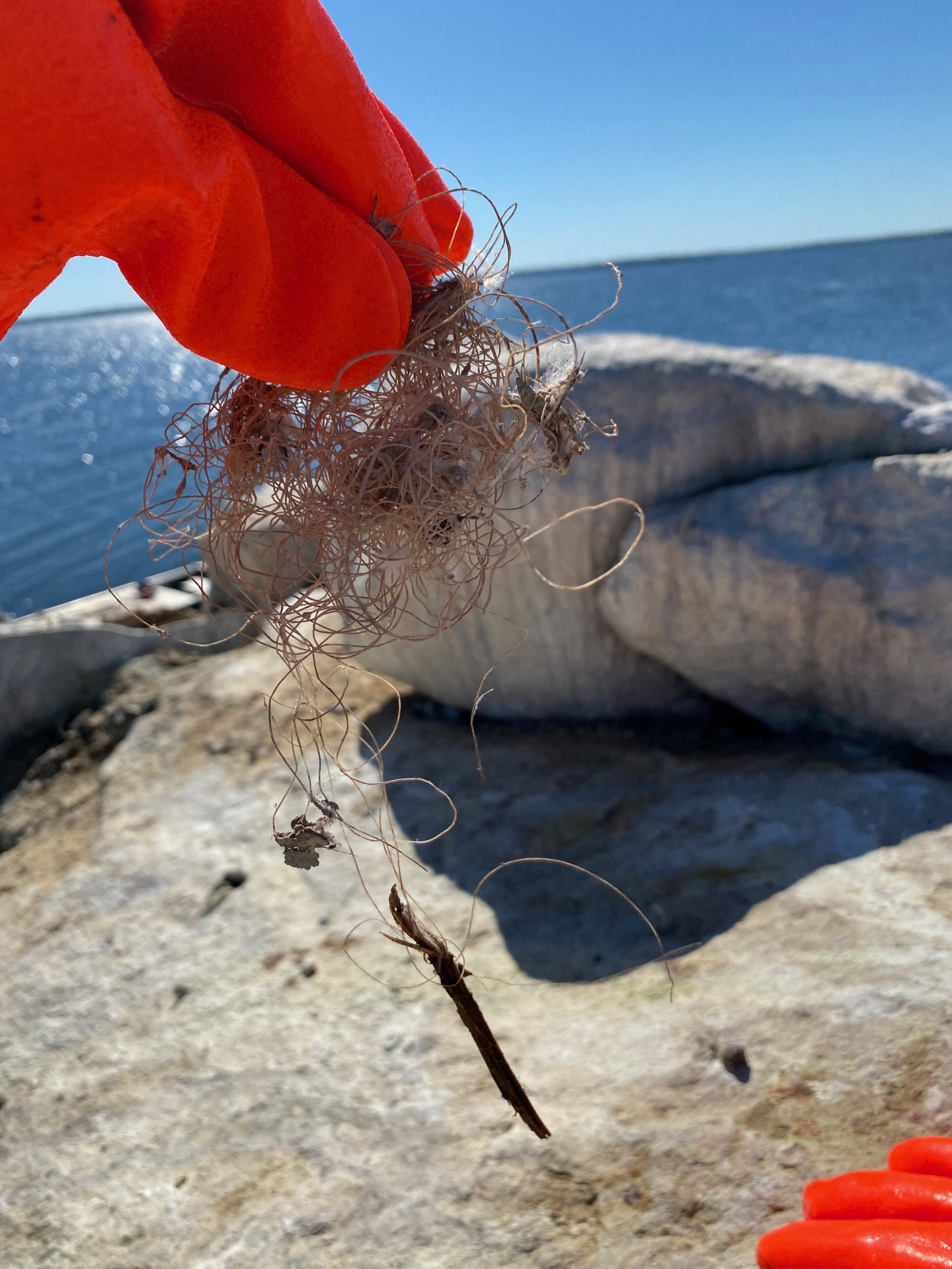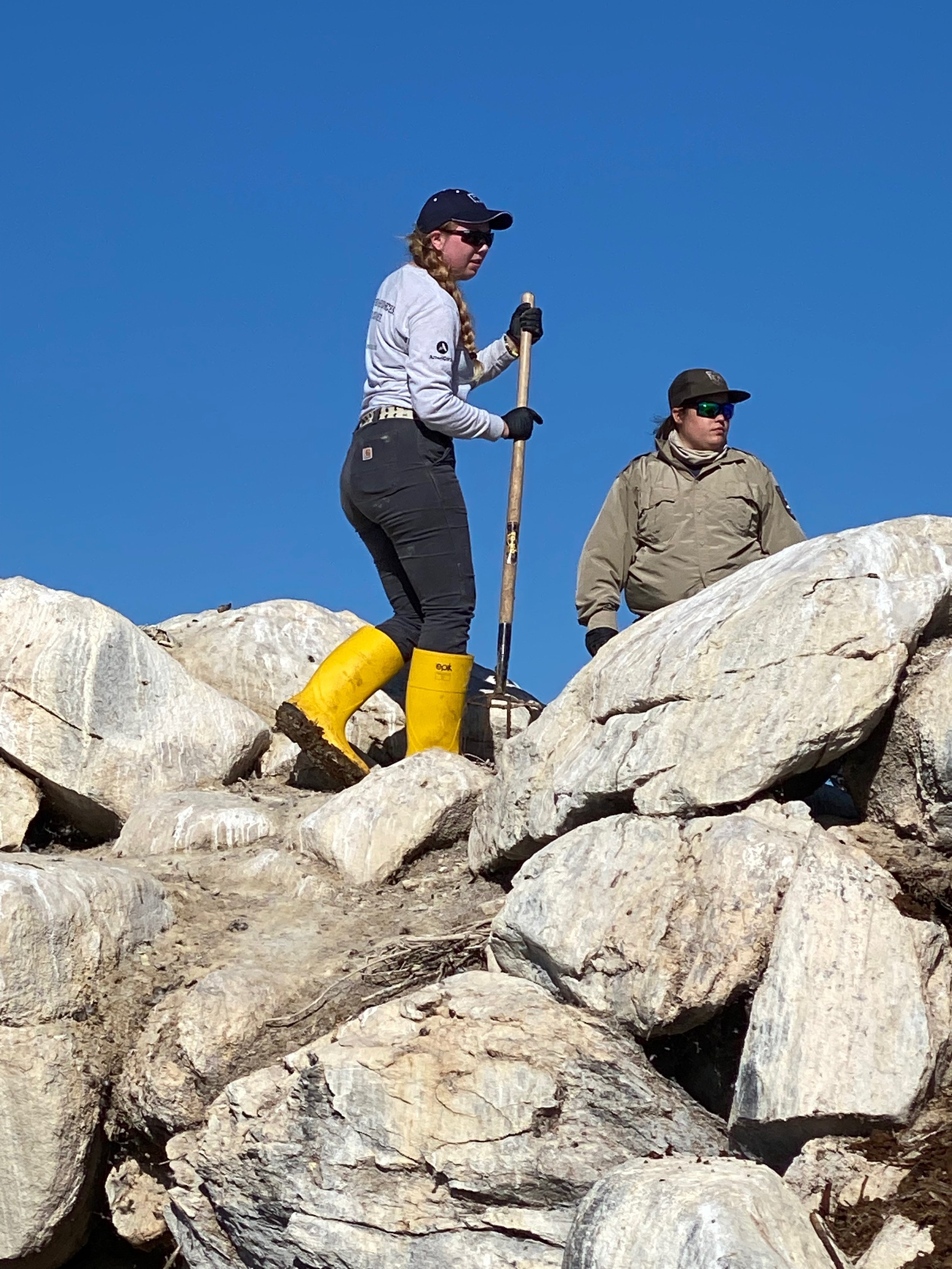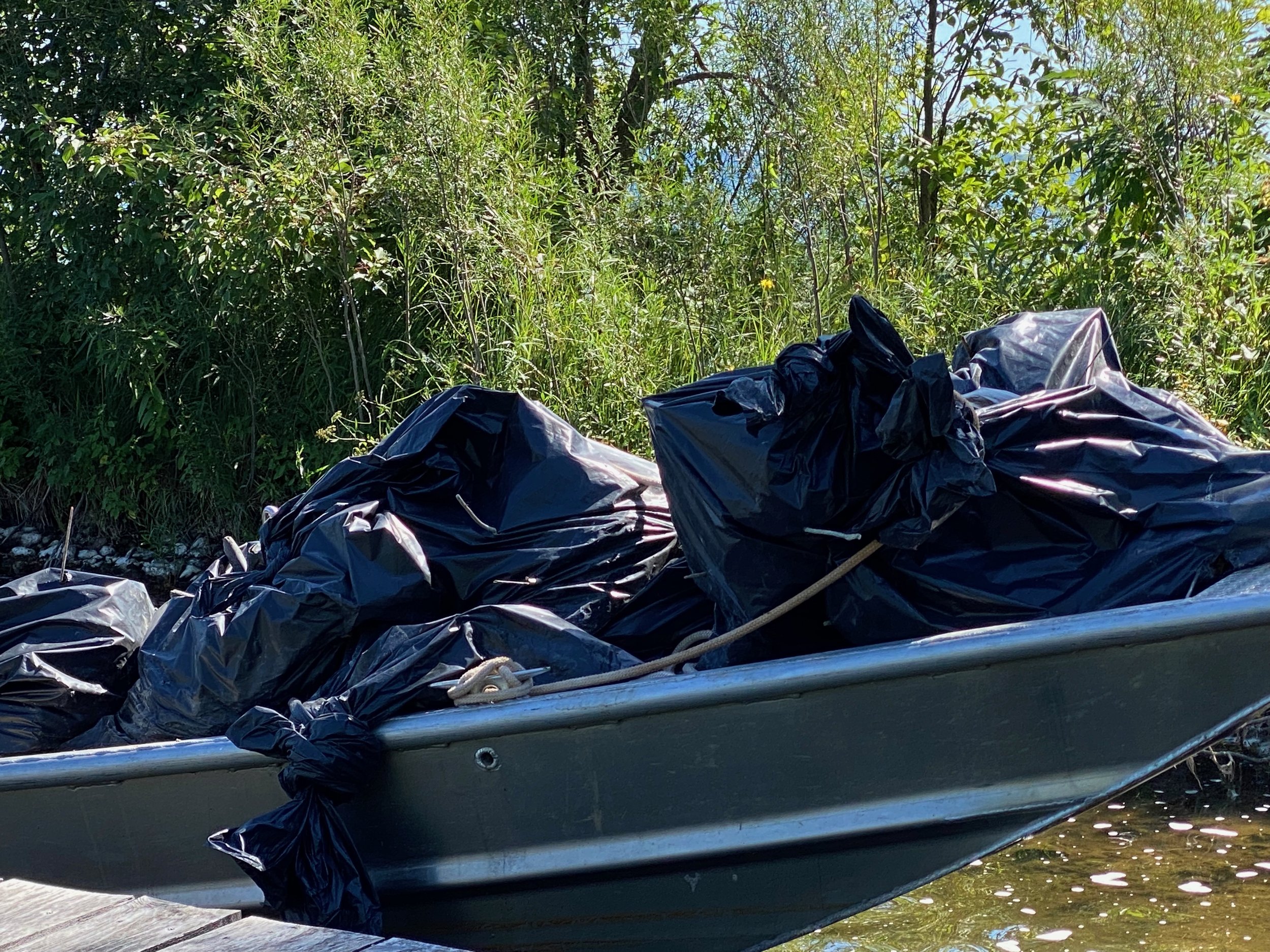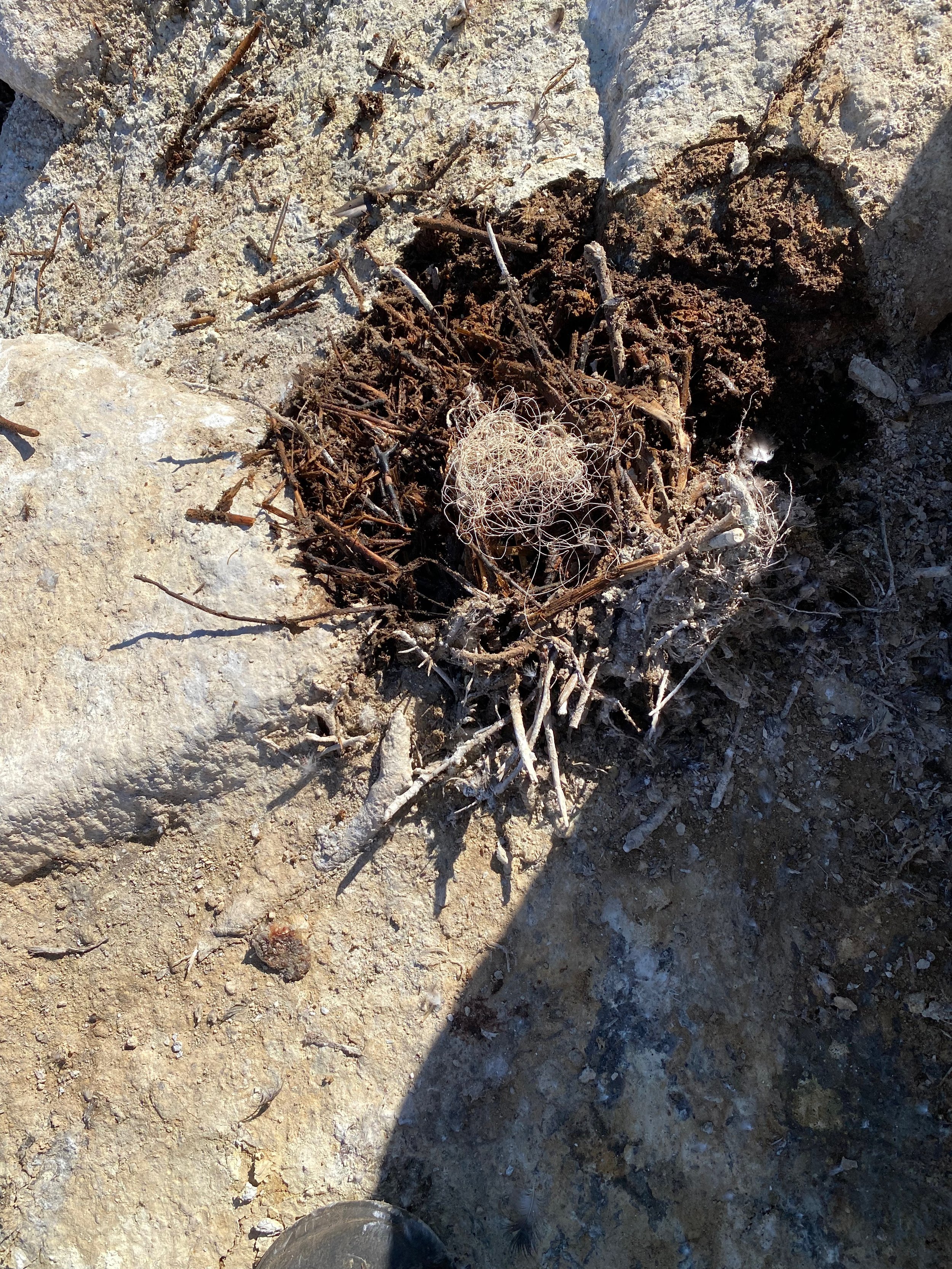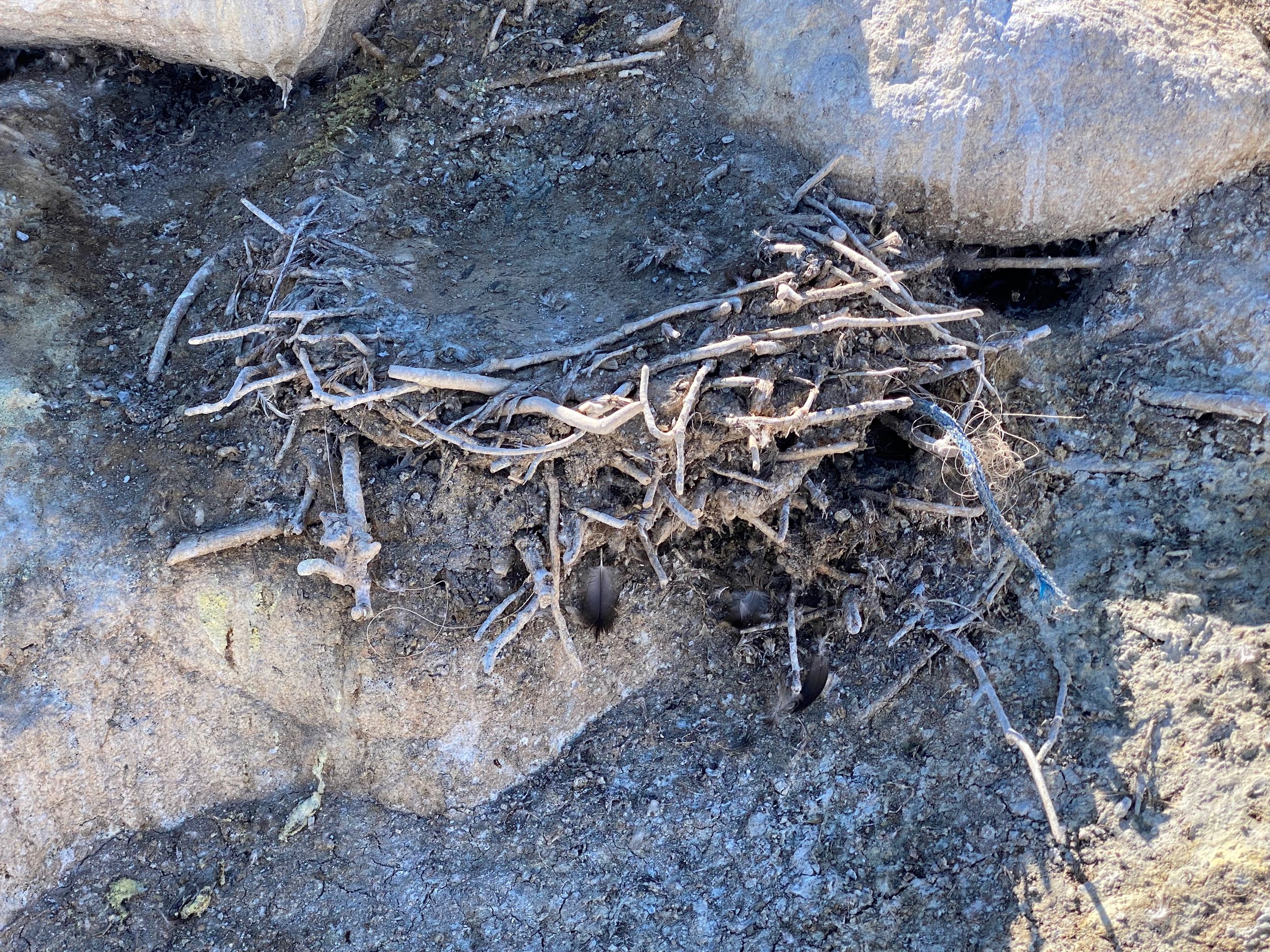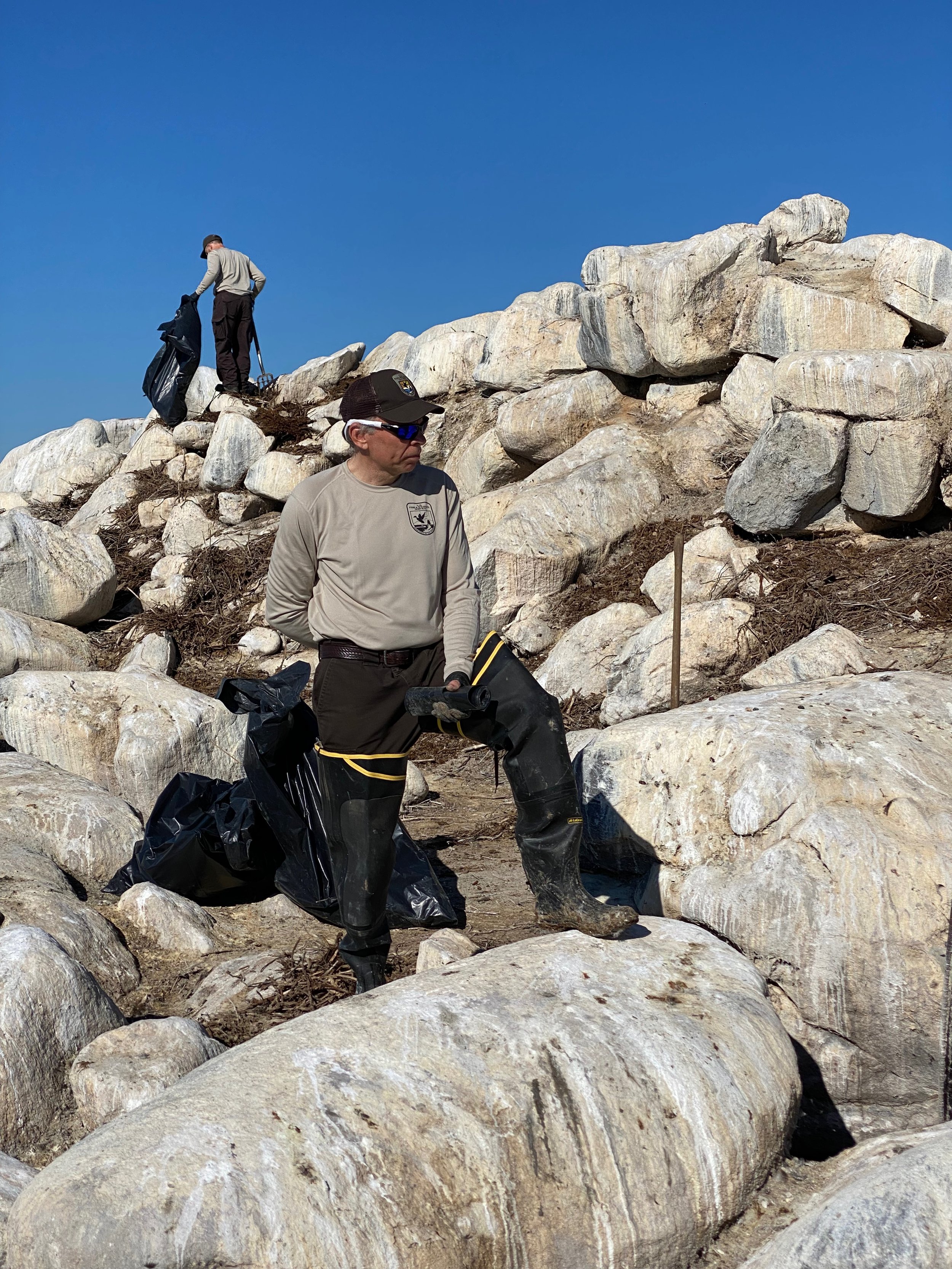Offering Help at Spirit Island — The Heart of the Lake
By VIVIAN LaMOORE, INAAJIMOWIN EDITOR
Spirit Island, the small rock-made island in the southwest region of Mille Lacs Lake, consists of weathered and eroded pink and white granite boulders. Culturally, "Spirit Island is the heart of Mille Lacs Lake," said Charlie Lippert, Mille Lacs Band Department of Natural Resources.
Spirit Island is one of two Islands in Mille Lakes Lake designated as a National Wildlife Refuge under the United States Fish and Wildlife Service. The island serves as host for several hundred pairs of double-crested cormorants. These crafty birds build their nests mainly with natural vegetation. But because they are scavengers for nesting material, they also build their nests with a variety of artificial man-made products they find in the lake that have been carelessly — or intentionally — left behind by humans. The Mille Lacs Band Department of Natural Resources has partnered with the USFWS in efforts to help maintain and remove the debris.
"The two islands, Hennepin and Spirit, have deep cultural meaning to the Band," said Kelly Applegate, Commissioner of the Mille Lacs Band Department of Natural Resources. "These are sacred spaces and cleaning off trash is a meaningful way to show that respect. Our team at the Band’s Natural Resource Department has worked cooperatively with the USFWS for over 30 years in various efforts to care for the islands. We will always protect the islands, respect their meaning, and care for them as part of our culture."
Mille Lacs National Wildlife Refuge was established in 1915 and is the smallest refuge in the National Wildlife Refuge System at 0.57 acres. The refuge consists of two islands, Hennepin and Spirit, in Mille Lacs Lake that are covered with jumbled rock, boulders and gravel. Both islands are used by colonial nesting species, mainly double-crested cormorants, and the state-threatened common tern.
Spirit Island was placed under federal protection for colonial water birds on May 14, 1915 by Executive Order 2199 by President Woodrow Wilson. Then, on October 13, 1920, Hennepin Island was added by Executive Order 3340.
Walt Ford is the Tribal Liaison to Minnesota and Iowa and the Refuge Manager at Rice Lake and Mille Lacs National Wildlife Refuges, under the USFWS, who is responsible for the care and protection of the refuges and the colonial water birds.
Colonial water birds nest in colonies in a small location. According to Ford, the population of cormorants nationally has been decimated due to DDT. After DDT was banned, it took about 20 years for the cormorants to come back to Mille Lacs. Two pair were observed nesting on Spirit Island in roughly 1993. The cormorants have gradually come back to Spirit Island which now hosts roughly 500 nests per year. Hennepin Island is smaller in size therefore hosts about 200-250 nests.
In September, Mille Lacs Band DNR crew consisting of Jordan Williams, Jamaal Baird, and Nate Tulenchik-Pendegayosh accompanied the Wildlife Refuge crew consisting of Jade Pederson, Nikki Ellingson, Roger Marks, and Walt Ford on the annual fall clean-up project. These efforts to clean up the trash on Spirit Island is important to protect the nesting habitat for the cormorants. The Band has been offering assistance to the Wildlife Refuge in these efforts at Spirit Island since 2019.
The primary reason for cleaning off the trash and debris from the island is to remove the fishing line that cormorants have brought in to build their nests. “If that gets wrapped around a wing or their neck, it can cut into flesh and cut off circulation which can cause them to lose a limb or lead to infection, all of which will inevitably cause their death,” Ford said. “We want to improve their nesting conditions for next year by leaving less of that stuff here. Even though we know the cormorants are going to bring more in next year we are reducing the pollution load.”
Cormorants will build new nests next year by pulling in vegetation material and anything else they can find to build new nests. “That is the problem,” Ford said. “If it was just the vegetation material, everything would be fine. If people would not be littering, there would be nothing we have to do here. If it were totally a natural environment, everything would decompose naturally. But because of all of the artificial fishing line, bobbers, lures, leaders, sinkers, sunglasses, wiring from trailers, bungie cords, broken fishing rods, and whatever else they find that they can carry, that stuff will not decompose.”
Much of the fishing line they find in the nests and on the island has been balled up. “We know some things we find are accidental losses by anglers and boaters. But not when fishing line is balled up like that. That was done intentionally and either flew out of the boat accidentally, or it was carelessly discarded,” Ford said.
The two islands that make up Mille Lacs National Wildlife Refuge are closed to the public. Hennepin and Spirit islands are a sensitive breeding area for various colony-nesting birds. If you are boating on Mille Lacs Lake, please stay at least 100 yards offshore while fishing or observing wildlife from your watercraft.
As always, it is important to discard of any trash in proper waste receptacles. Please do not litter.


